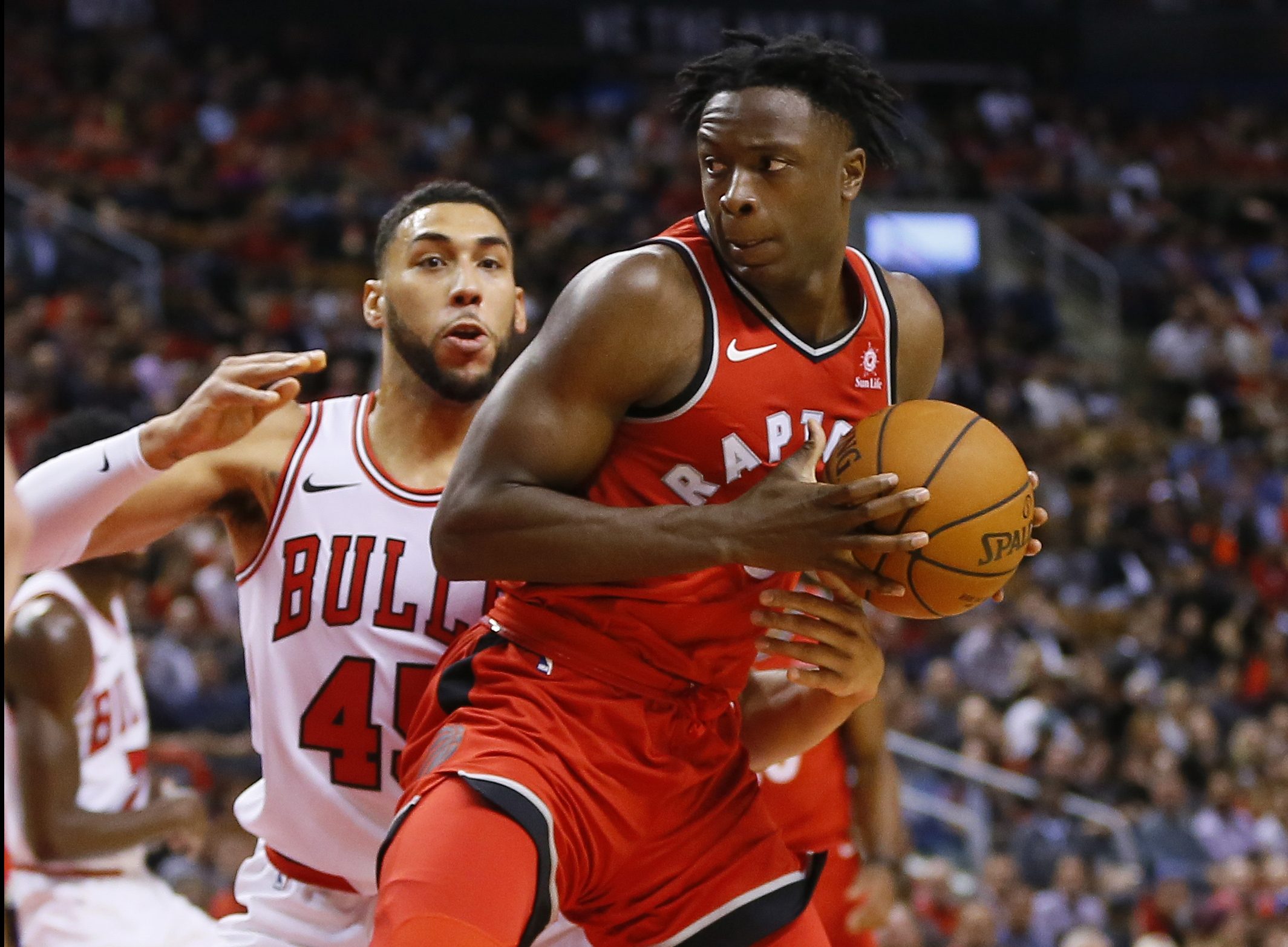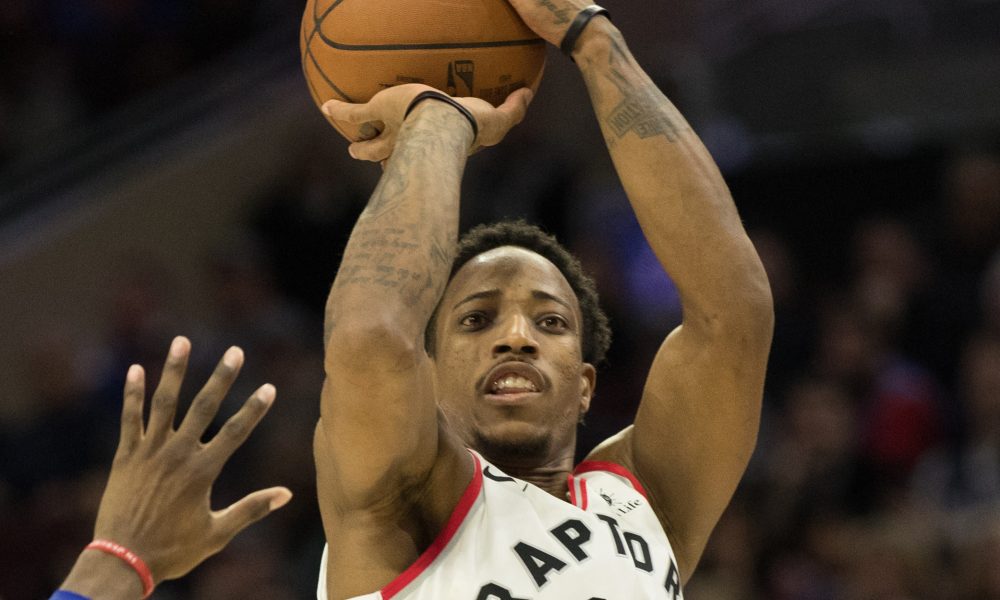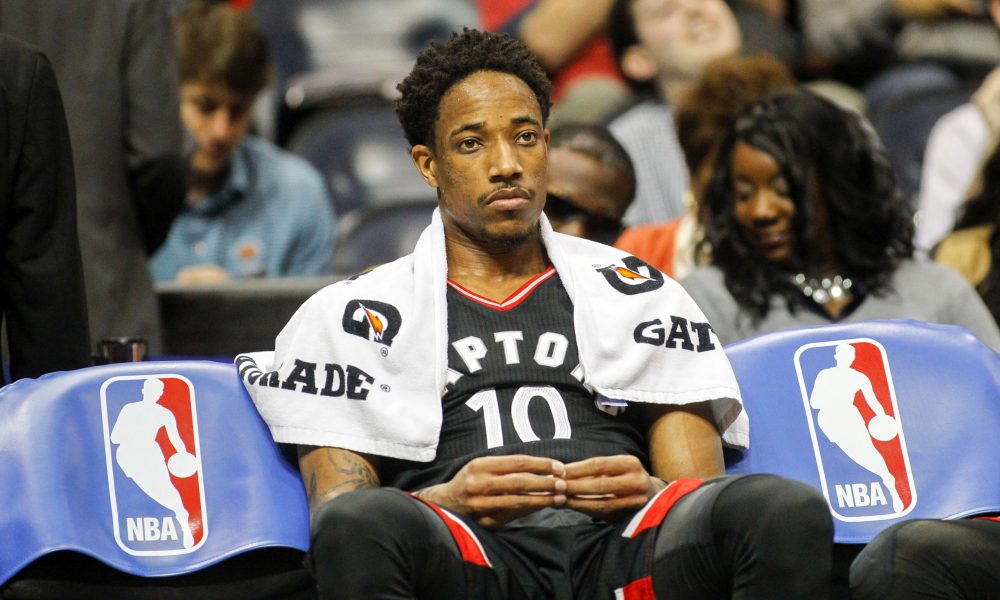We know who are the (potential) future starters for the Toronto Raptors, give or take a few variables. Delon Wright, Norman Powell, O.G. Anunoby, Pascal Siakam, and Jakob Poeltl (plus Fred VanVleet somewhere in the plans) have proven themselves time and again to be integral parts of the Raptors’ future plans. The team is committed to each of those players, and fortunately each is locked up for the long-term future on incredibly cheap contracts, other than Powell, whose contract is quite affordable for a young wing with his potential. But what will those players look like together without stars Kyle Lowry, DeMar DeRozan, and Serge Ibaka to prop up their scoring punch? Are the starters of the future a competent lineup?
Any discussion of the future starters of the Toronto Raptors begins with Anunoby. His advanced numbers are ridiculous; he’s currently leading the league in net rating, per nba.com! What do the outrageously dominant bench of the early season and the renewed starters of the recent stretch have in common? The man who belittles stupid media questions worse than anybody since Gregg Popovich.
What does gameplay success look like with Anunoby and without Lowry or DeRozan? It starts on the defensive end. Each of the five above-mentioned players is as long as the LOTR trilogy, able to lock down players much taller than himself. They are a switchy group, any of whom can block shots from jump-shooters and around the rim while also able to stay in front of jitterbugs. While 208 possessions played with Anunoby and without Lowry or DeRozan have ended up with a points per possession difference of only +5.8, that is entirely due to the stifling defense of 95.2 points allowed per 100 possessions. For a comparison, the league-best defence by the same metric (OKC) allows 102.4 points per 100 possessions.
Here’s a possession in the Raps’ first game of the season, in which VanVleet, Wright, Miles, Anunoby, and Poeltl defended a broken-down horns set (I think? Tough to see what the Bulls were doing, ramshackle as they were without their superstars Bobby Portis and Nicola Mirotic). I’ll use this lineup as a surrogate for the above five (who haven’t actually played a minute together, ever). But the principles of how those five could dominate on defense is clear.
VanVleet completely blows up a hand-off, avoiding the big (Christiano Felicio) while sticking to his man’s hip. He then switches with Miles, whose man shoots up from the corner. VanVleet sees Felicio having trouble reading the next step in the play, and he overplays his new man to reject any pass from Felicio. Dude is a brilliant defender, full stop. Anyone who says otherwise is only looking at his height and not at his actual contributions. Meanwhile, Wright and Anunoby switch a weak-side pindown, both communicating fluidly; their athleticism means any attempted pass would be a turnover. Felicio has nowhere to go and nothing to do, like my entire generation. He panics and takes a few meandering dribbles, so Poeltl takes everything from him, like my parents’ generation.
Anunoby has played all of his minutes without Lowry and DeRozan alongside long, mobile defenders like Wright and Poeltl. Their length suffocates opposing offenses, who turn the ball over regularly (21.0% of possessions, tops in the league). Per Cleaning the Glass, those lineups lead the league in points added off of steals and points per turnover possession. Wright especially helps there, as he ranks in the 97.2nd percentile in transition, shooting an obscene 73.7% from the field and scoring 66.7% of the time.
In the open floor, Wright’s inability to consistently knock down the 3 doesn’t matter. His euros, hesitations, scoops, and floaters are deadly against transition defenses. Here’s a transition bucket from that Anunoby line (with Alfonzo MicKinnie playing in the place of Anunoby during garbage time against the Nets). Isaiah Whitehead earned a switch against Poeltl, who obviously got his giant Austrian mitts on the ball. Powell threw the ball up-court to Wright and Siakam, both of whom were streaking down the court. Wright finished, but realistically, they should both have dunked the ball at the same time like some kind of god damn monstars.
When teams are able to keep possession of the ball long enough against such a vaunted defence, they often force up a barfy, rushed shot; opponents’ shot charts against such lineups are bizarre. They shoot more than half of their shots at the rim (which is bad for the Raps), but they only score at a rate of 54.9% eFG (which is craze-mazing for the Raps). Siakam especially, but also Poeltl, have defended the rim this year like a kung fu master defending a cookie. This lineup also leads the league in forcing a high number of midrange shots (and misses from that area) and few 3s (although teams make those at a high rate). Translation: opponents shoot lots inside the arc, but they only shoot well from outside the arc.
On the other hand, those Anunoby-led lineups have terrific shot profiles. They shoot 44.4% of their shots at the rim and 44.4% of their shots from 3 – good for an eFG% of 52.7. The shots are great, but the results are only good. Why? Those lineups are shooting 70% at the rim (!) but only 26.9% from 3, which is horrific. If length on defense is the superpower #1 for these lineups, then shooting is the superweakness #s 1-Bargnani.
Anunoby leads the group, shooting 46.5% from 3 on a hefty 3.0 attempts per game. The next most accurate marksmen of the group is Powell (31.3% on 3.2 attempts), then Wright (26.5% on 2.0 attempts), and Siakam (15.8% on 2.0 attempts). Poeltl doesn’t yet have that range, only shooting 50% from the line this year (I know, I know, he hit a 3).
Anunoby has shown the ability to use his surprisingly-deft handle and body control to take defenders off the dribble. Here he keeps Marquese Chriss on his hip while attacking off the switch and uses the rim to finish on the other side.
That’s a nice move, but it’s one that duplicates the already-high-level offensive skills of Delon Wright, Powell, and Siakam: attacking off the dribble. Furthermore, Anunoby leverages Ibaka’s shooting ability to keep help away from his drive; who can provide that gravity for Anunoby if the ball is already in his hands? There may well be a reason that the Wright-Powell-Anunoby-Siakam-Poeltl lineup has seen 0 minutes. Put VanVleet in for either of the bigs, and the defense remains stifling. He’s also another shooter who can give breathing space on the drive for Wright, Powell, and Anunoby.
For the offense sans Lowry, DeRozan, and Ibaka to develop more consistency and punch beyond its stellar transition attack, many of the offensive skills of the current bench members have to progress. I’m confident Powell will develop into a shooter and hopeful Siakam’s shot can at least reach Pattrick Patterson-level tolerability. That’s a bare minimum for development.
So what do the Raptors have, then? Anunoby has a +32.9 point differential per 100 possession with Powell and +27.5 with Siakam. Numbers like that won’t stick, as they are greatly due to shared court time with Lowry or DeRozan. Without any of the big 3, Anunoby has a +3.6 rating per 100 possessions. This is more likely a best-case scenario in the long-term. The lineup of the future can succeed, but they won’t be the world-beaters of 2017-18. More likely, the future Raps could develop into the Milwaukee Bucks of 2+ years ago: talented, athletic, long, and full of potential. Also a losing team. Though Anunoby has a nonzero chance at becoming a Greek Freak – Kawhi mashup, the roster won’t be able to pop without that star development or some serious shooting development from every position.
Importantly, the Raptors future starters are already too good to tank. They might be a late lottery team if things break wrong (injury, lack of development, inability to re-sign some players, etc.), but there would always be a handful of much worse teams trotted out to lose. That’s not the plan, though. Even when Lowry, DeRozan, Ibaka, and others depart the Raptors (🎶Hello Darkness My Old Friend🎶), the team is still built to win. The Raptors already have a foundation for future success – the only treat remaining is watching it get built and seeing how high the ceiling can rise.




